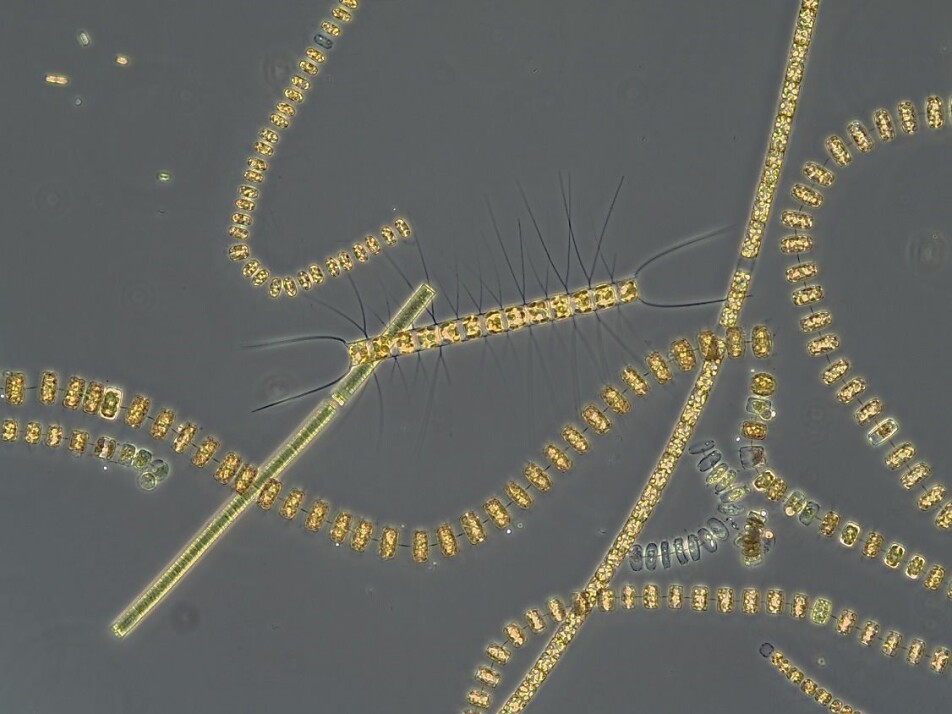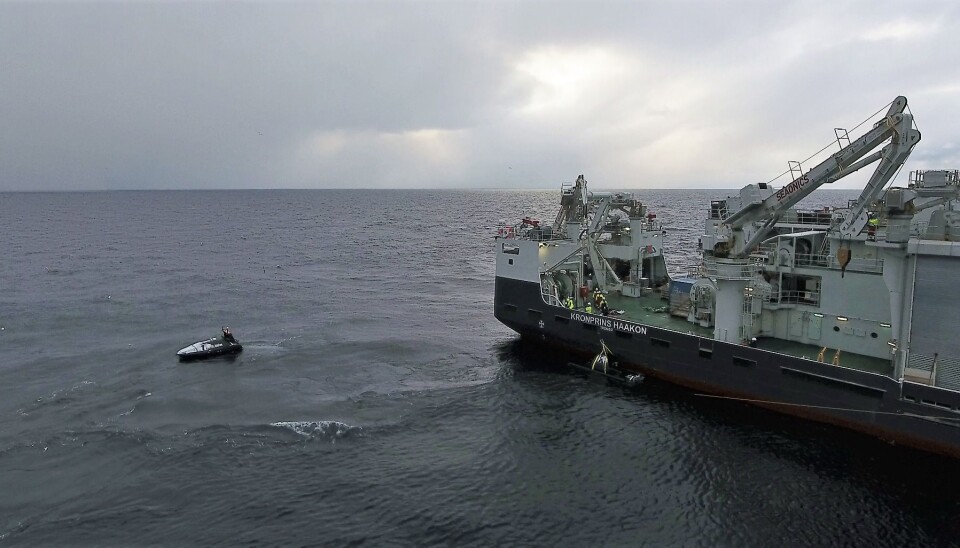
Mixing production deep into the ocean
Imagine yourself lying on your back in a forest on a sunny spring day watching upwards to the tree tops. Warm rays of sunlight falling through the canopy warm your face and the song of birds echo in the distance. Now imagine all the tree trunks, branches and twigs are gone and just leaves floating lofty above you.
You have entered the world of microalgae inhabiting the sunlit surface of our oceans. These unicellular plants are the engines of the ocean and make up >50% of the global primary production. We take them as granted as the oxygen they produce but without them the ocean would be a deserted place. As on land, spring is the time of growth and blossoming and the interdisciplinary team of scientist gathered on board RV "Kronprins Haakon" is equipped to study the awakening of the marine ecosystem in the northern reaches of the Barents Sea.
As we finish sampling at our first Atlantic process station of this Nansen Legacy spring cruise, there is a feeling of excitement in the air. April-May is a crucial time for algae researchers, as this is when the microalgae bloom. These spring months are characterized by increasing light allowing microalgae to thrive. They convert light energy into sugars that form the base of the entire marine food web and release oxygen as a by-product. As we continue our journey from the northernmost reaches of the North Atlantic into the marginal ice zone and into the Arctic Ocean we will follow the algal spring awakening and all the smaller and larger animals depending on it.
Mixing up the system
When we arrived at the first research station, a gale was raging up to storm, mixing the water column and suspended algae (phytoplankton) almost all the way down to the seabed. Surprisingly, we measured elevated chlorophyll concentrations (green pigment characteristic of all photosynthetic organisms) down to 250m depth. The most likely scenario is that the spring bloom had started at the surface and then got deeply mixed during the storm. Although diluted by the storm, it certainly qualifies as an extensive bloom if integrated over the 250m water column. The bloom was dominated by diatoms. These single celled algae, encased in a house of glass, come in many shapes and sometimes form long chains. They are the most important primary producers in the ocean and account for every fifth breath of oxygen we breath. The dominant diatom species we identified under the microscope were typical for the spring bloom and were forming very long chains of cells, indicative of good growth conditions. As we travel north into the marginal ice zone, we see that the condition change – less waves due to the ice, and a stronger layered structure of the water column. The water is now below zero all the way down to the seabed.
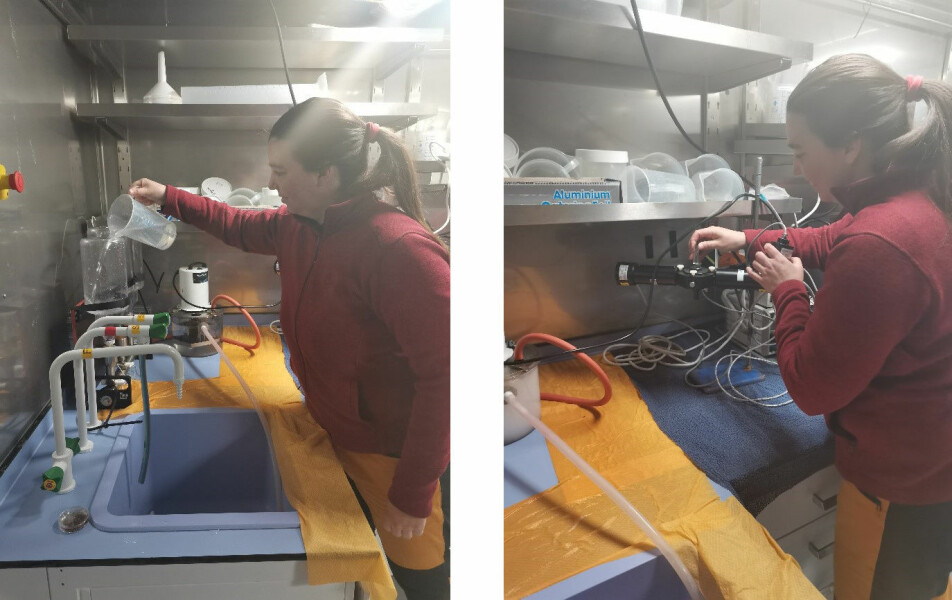
Natalie Summers is a PhD fellow at NTNU in Trondheim studying microalgal dynamics both in the water column and under the ice. She is interested in the dynamics of algae in relation to light. For her research she uses a Pulse Amplitude Fluorometer (PhytoPam) to measure photosynthetic parameters in living cells. This is combined with pigment analysis using High Performance Liquid Chromatography (HPLC). Pigments are used by algae during photosynthesis to capture energy from light and transfer this energy to reaction centers in the cell. Other pigments protect the cells from too much light.
By collecting water, algae and animals the scientists on RV "Kronprins Haakon" are able to take very accurate measurements of the constituents and inhabitants of the sea. However, these measurements constitute snapshots. What if the ocean was different some hundred meters or a kilometer away? Given that most of the measurements are very time consuming, it is not an option to collect samples everywhere in the ocean. So what do we do then? In this project we use satellites and robotics in combination with the research onboard "Kronprins Haakon". By analyzing the color of the ocean we can say something about the content of chlorophyll as it has distinctive light absorption and reflection spectra which can be seen by satellites from space covering very large areas at the same time. Unfortunately, these observations will only cover the surface conditions, and as we have seen on this cruise, the vertical distribution of phytoplankton can vary very much. We deployed an Unmanned Surface Vehicle (USV) and an Autonomous Underwater Vehicle (AUV) to measure both the light coming in from the sky and the presence of chlorophyll in the water since the chlorophyll is an indicator for both photosynthesis and abundance of phytoplankton.
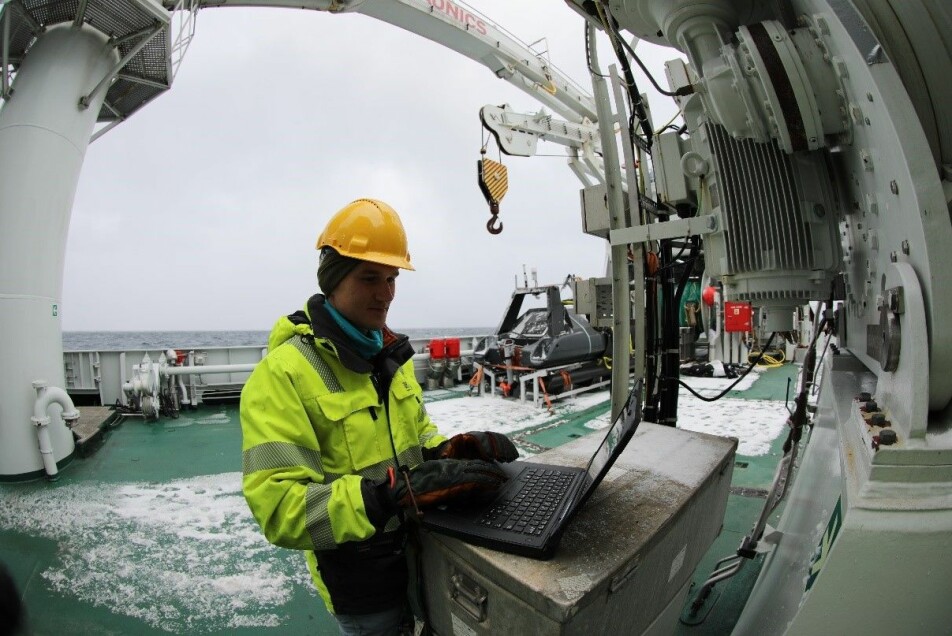
Jens Einar Bremnes works with autonomous systems and risks assessments and is a PhD student at the AMOS center at NTNU and collaborates with the Nansen Legacy project on solutions for safe autonomous solutions for arctic applications. In his work risk quantification methods will be used input for planning and decision-making routines related to under ice operations. For this cruise he has programmed the USV and will deploy an underwater vehicle to measure the light conditions also under the ice.
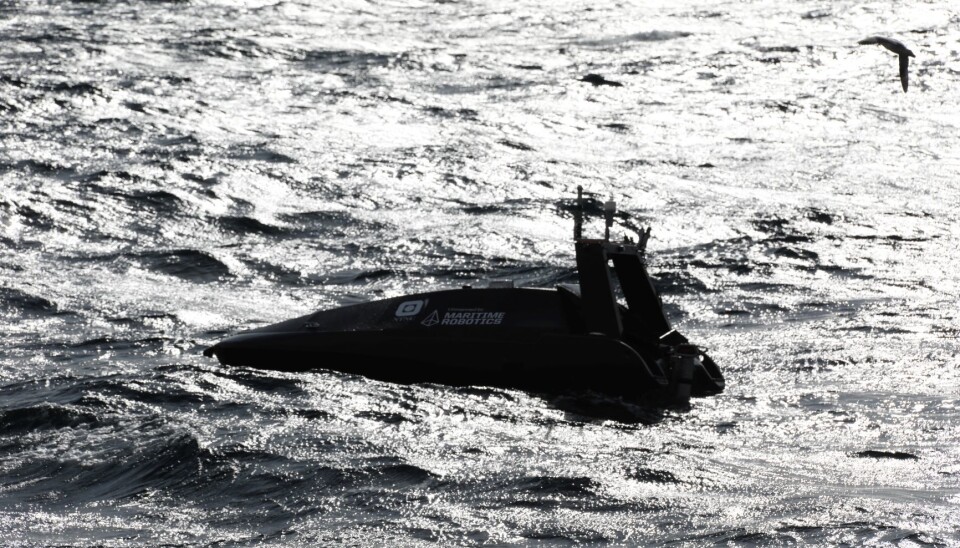
Connecting the dots
The AUV flies autonomously at different depths to monitor the ocean, while the USV was running a mission measuring the surface conditions. Because these values differ at different locations and different depths, the data collected by the robots provide us with a map of what the ocean looks like: where there is warm water, where there is salty water, where there is a lot of light and good conditions for marine life.
Then, the real work may begin: connecting the dots, such that we learn more about the ocean that takes up 67% of our planet.
The multidisciplinary aspect of this cruise creates great opportunities for cross disciplinary work. For example, we will combine data collected from the autonomous underwater vehicle and the unmanned surface vehicle with data and analyses made in the labs inside the research vessel. By setting datasets from different disciplines together, we can get a better picture of life in the Barents Sea.
